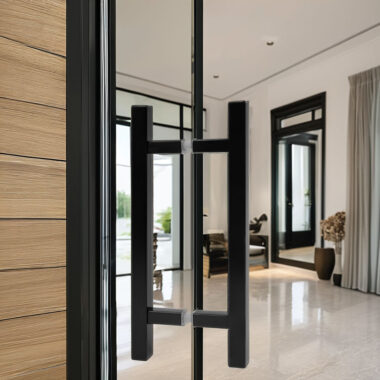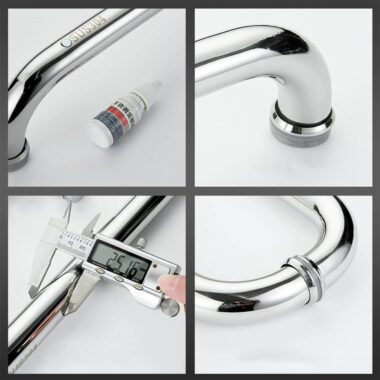Why Accessibility Standards Matter
With the aging population and stricter building codes, door hardware must ensure universal usability. In 2025, both ADA (Americans with Disabilities Act) and EN standards continue to mandate specific requirements for lever handles. These include grip size, torque, and return-to-door designs to guarantee accessibility for everyone, including people with limited mobility.
For project owners, collaborating early with a trusted Door Handle Manufacturer ensures that specified hardware meets international compliance standards without costly redesigns.
Key ADA & EN Requirements for Lever Handles
Shape & Grip: Levers must allow operation with a closed fist or elbow, avoiding tight pinching or twisting.
Force & Torque: ADA requires handles to operate with ≤5 lbf (22.2 N) of force. EN standards set similar benchmarks.
Return-to-Door: Levers should return within ½ inch (13 mm) of the door surface to reduce snagging risks.
Height Placement: Handles must be positioned between 34–48 inches (865–1220 mm) above the floor.
Meeting these standards not only avoids fines but also supports inclusive environments in schools, hospitals, and workplaces.
Lever Handle Design Best Practices
✔ Non-slip finishes – PVD or textured coatings improve grip.
✔ Rounded ends – Reduce clothing or bag snag hazards.
✔ Back-to-back mounting – Ensures accessibility on double doors.
✔ Maintenance-friendly design – Important for hospitals and public facilities.
Builders often rely on Pull Handles Manufacturer catalogs to find complementary hardware that aligns with lever handle accessibility.
Case Example: Healthcare Facility
In hospitals, lever handles are often paired with antimicrobial finishes. Compliance is critical because patients and staff must operate doors hands-free or with minimal effort. Choosing compliant lever handles upfront reduces retrofitting costs and ensures patient safety.
Final Thoughts
ADA and EN accessibility requirements aren’t just legal obligations—they represent a commitment to inclusivity. Specifying lever handles that meet compliance ensures every user can interact with doors safely, confidently, and independently.









